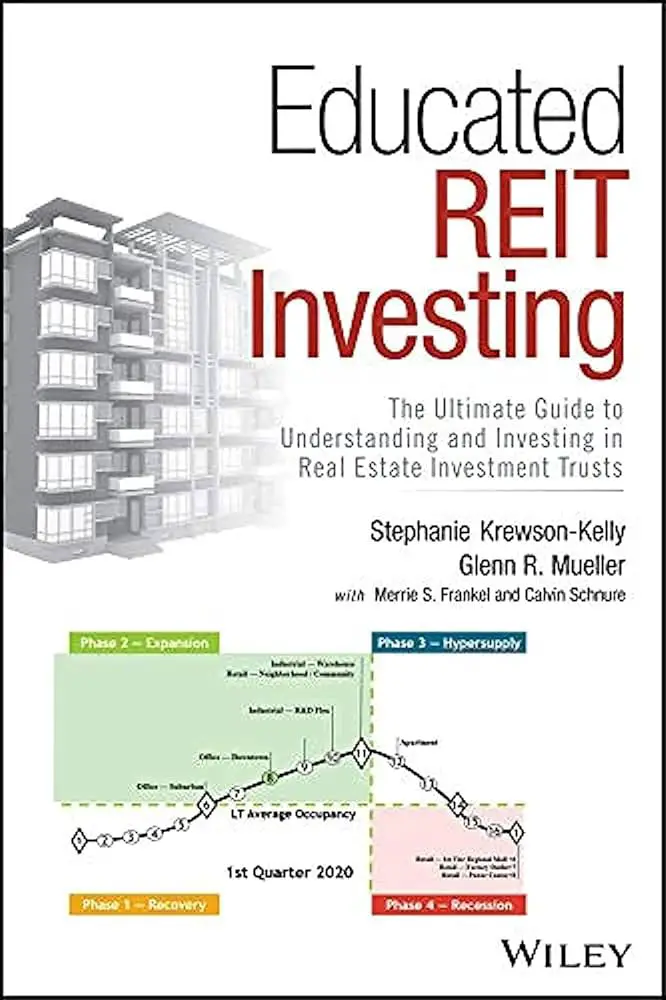Understanding real estate investment metrics can sometimes feel like navigating through a complex maze. But fear not! In this guide to understanding real estate investment metrics, we will unravel the mystery and provide you with the knowledge and tools to confidently analyze and evaluate investment opportunities. Whether you’re a seasoned investor or just starting out, this guide will equip you with the essential metrics and insights needed to make informed decisions and maximize your returns. So, let’s dive in and demystify the world of real estate investment metrics!
Guide to Understanding Real Estate Investment Metrics
Investing in real estate can be a lucrative venture, but it requires a thorough understanding of various metrics to make informed decisions. Real estate investment metrics are essential indicators that help investors analyze the profitability and potential risks associated with a property. In this comprehensive guide, we will explore the key real estate investment metrics you need to know to navigate the real estate market successfully.
1. Cap Rate (Capitalization Rate)
The cap rate, or capitalization rate, is a fundamental real estate investment metric that measures the return on investment (ROI) for a property. It is calculated by dividing the property’s net operating income (NOI) by its current market value. The cap rate helps investors determine the potential income-generating capacity of a property and compare it to other investment opportunities. A higher cap rate indicates a higher potential return, while a lower cap rate may suggest lower profitability.
2. Cash-on-Cash Return
The cash-on-cash return is another crucial metric that evaluates the profitability of a real estate investment. It measures the annual pre-tax cash flow generated by an investment property relative to the amount of cash invested. To calculate the cash-on-cash return, divide the annual cash flow by the total cash investment (down payment and closing costs). This metric helps investors assess the efficiency of their invested capital and make informed decisions about potential returns.
3. Gross Rent Multiplier (GRM)
The Gross Rent Multiplier (GRM) is a metric commonly used to evaluate the value of a rental property. It is calculated by dividing the property’s purchase price by its gross rental income. The GRM offers a quick way to compare different properties and estimate their potential income. A lower GRM indicates a higher potential return on investment, while a higher GRM suggests a lower return.
4. Debt Service Coverage Ratio (DSCR)
The Debt Service Coverage Ratio (DSCR) measures a property’s ability to cover its debt obligations. It compares the property’s net operating income (NOI) to its debt service (mortgage payments). A DSCR above 1 indicates that the property generates enough income to cover its debt payments, while a DSCR below 1 suggests a higher risk of default. Lenders often use the DSCR as a key factor in determining loan eligibility and interest rates.
5. Return on Investment (ROI)
Return on Investment (ROI) is a widely used metric in real estate investing. It calculates the profitability of an investment by dividing the net profit (after expenses) by the total investment cost. The ROI provides a percentage that represents the return on the initial investment. A higher ROI indicates a more profitable investment, while a lower ROI suggests a lower return. Investors use the ROI to compare different investment opportunities and assess their potential profitability.
6. Net Operating Income (NOI)
Net Operating Income (NOI) is a crucial metric that evaluates the profitability of an income-generating property. It represents the property’s total income generated from operations, minus operating expenses, but excluding debt service and income taxes. The NOI provides a clear picture of a property’s income-generating potential and is often used to calculate other real estate investment metrics like cap rate and DSCR.
7. Vacancy Rate
The vacancy rate measures the percentage of unoccupied rental units in a particular area or property. It is an important metric for real estate investors as it helps assess market demand and potential rental income. A low vacancy rate indicates a high demand for rental properties, which may lead to higher rental prices and increased profitability. Conversely, a high vacancy rate suggests a saturated rental market and potential challenges in generating rental income.
8. Cash Flow
Cash flow is the amount of money that remains after deducting operating expenses and debt service from rental income. Positive cash flow means the property generates more income than it requires to cover expenses and debt obligations, indicating a profitable investment. Negative cash flow, on the other hand, means the property is not generating enough income to cover expenses, potentially leading to financial difficulties for the investor.
9. Appreciation
Appreciation refers to the increase in a property’s value over time. It is an important factor in real estate investing, as it contributes to long-term profitability. Properties in high-demand areas or those experiencing economic growth are more likely to appreciate. Investors consider both the potential rental income and the expected appreciation when evaluating an investment opportunity.
10. Return on Equity (ROE)
Return on Equity (ROE) is a metric that measures the return on the amount of equity invested in a property. It is calculated by dividing the cash flow (after expenses and debt service) by the owner’s equity. ROE helps investors gauge the profitability of their investment relative to the amount of money they have personally invested.
In conclusion, understanding real estate investment metrics is crucial for making informed decisions and maximizing profitability in the real estate market. By familiarizing yourself with these key metrics, such as cap rate, cash-on-cash return, gross rent multiplier, and debt service coverage ratio, you can effectively evaluate investment opportunities, assess risk, and determine potential returns. Remember, each metric provides valuable insights into different aspects of a property’s financial performance, allowing you to make sound investment choices.
Webinar: The Top 10 Metrics Every Real Estate Investor Should Know (and Why)
Frequently Asked Questions
Frequently Asked Questions (FAQs)
What are real estate investment metrics?
Real estate investment metrics are numerical indicators used to evaluate the financial performance and potential of a real estate investment. These metrics help investors analyze various aspects, such as profitability, risk, and return, to make informed decisions.
What is the significance of real estate investment metrics?
Real estate investment metrics provide essential insights into the financial viability and potential risks associated with an investment. By understanding these metrics, investors can assess the profitability, cash flow, and overall performance of a property, aiding in the decision-making process.
Which real estate investment metrics should I consider?
There are several key metrics to consider when evaluating a real estate investment. Some common ones include:
1. Cash-on-Cash Return: Measures the annual return on investment relative to the initial cash invested.
2. Cap Rate (Capitalization Rate): Represents the net operating income as a percentage of the property’s value.
3. Gross Rent Multiplier (GRM): Determines the property’s value based on its gross rental income.
4. Debt Service Coverage Ratio (DSCR): Evaluates the property’s ability to cover its debt obligations.
5. Internal Rate of Return (IRR): Calculates the potential rate of annual return considering the time value of money.
How do I calculate the cash-on-cash return?
To calculate the cash-on-cash return, divide the annual pre-tax cash flow by the initial cash investment, and then multiply by 100 to obtain a percentage. It helps investors determine the profitability of their investment in relation to the amount of cash invested.
What is the cap rate and how is it calculated?
The cap rate is a metric used to estimate the property’s potential return on investment. It is calculated by dividing the property’s net operating income (NOI) by its current market value or purchase price. The cap rate helps investors compare different properties and assess their risk and potential return.
How is the gross rent multiplier (GRM) useful in real estate investment?
The gross rent multiplier (GRM) is a metric that enables investors to evaluate the value of a property based on its gross rental income. By dividing the property’s purchase price by its gross annual rental income, investors can quickly assess its relative value compared to similar properties in the market.
What does the debt service coverage ratio (DSCR) indicate?
The debt service coverage ratio (DSCR) determines whether the property generates sufficient cash flow to cover its debt payments. It is calculated by dividing the property’s net operating income (NOI) by its annual debt service. A DSCR of 1 or higher signifies that the property generates enough income to cover its debts.
How is the internal rate of return (IRR) relevant to real estate investments?
The internal rate of return (IRR) helps investors assess the potential profitability of an investment by considering the time value of money. The IRR is the discount rate that equates the present value of expected future cash flows with the initial investment. It provides insight into the potential rate of return and helps investors compare different investment opportunities.
Final Thoughts
Understanding real estate investment metrics is essential for anyone looking to invest in this sector. By familiarizing yourself with key metrics such as cap rate, cash-on-cash return, and net operating income, you can make informed investment decisions and maximize your returns. Cap rate helps to assess the profitability of a property, while cash-on-cash return measures the cash flow generated from the investment. Net operating income provides an overview of the property’s income after deducting operating expenses. By utilizing these metrics, investors can evaluate the potential of a real estate investment and build a successful portfolio. So, whether you are a novice investor or an experienced one, this guide to understanding real estate investment metrics is a valuable resource to enhance your investment strategies.



